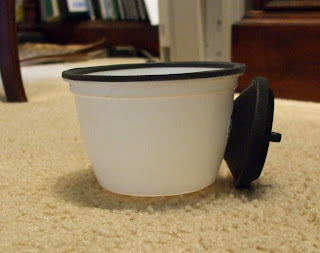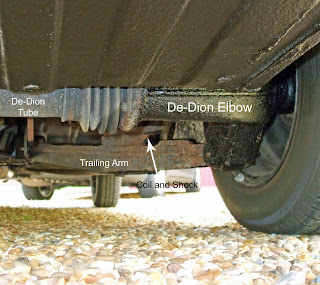I've spent years struggling with twin SU carbies, they're a bugger to get right. Oh I've got all the DIY tools - Gunsons Colortune and CarBalancer. Colortune is fine, there's no problems with that, it's balancing the throttles thats a real pig.
The CarBalancer has a rubbery thingy to shove in the venturi of the carb to make an air tight seal and force all air entering the carb to go through the tool for measuring. That's fine in principle but the threaded studs that fasten the air cleaner box onto the carbs are in the way and getting a good seal is pretty much impossible. I know purists will say that it should be done by ear, listening to the suck from each in turn, but although I'm a bit musical and have an ear for music, I obviously don't have an ear for sucking (take that anyway you like!!)
I've been trying to think of a way around this, and here's my home made add-on for the CarBalancer. It's made in true Blue Peter style (no, not with an egg box and a wire coat hanger) but with a Christmas Pudding bowl! It was a small Christmas Pudding and the plastic bowl that it came in says on the bottom that it holds ½ pint.
Anyway, I carefully cut a hole in the side of the bowl and glued the CarBalancer air inlet into this hole, when dry, I sealed the inside and outside with kitchen/bathroom sealant. Then around the top of the bowl, where it would be held against the carburettor venturi, I glued draught excluder foam so that I could be sure I was getting an air tight seal.
The beauty of this design, is that the air cleaner box studs now go inside the bowl and a true air tight seal is made.
Here are the photos, it works superbly - make one yourself!


And so you can get some feel for it, Here's a photo of the carburettors, you can see there is almost no room between the carbs and the inner wing - just enough for a slim air cleaner box!

And here with the air cleaner box removed, you can see the problematic studs:
And finally with my creation held against the carburettor - Excellent!





